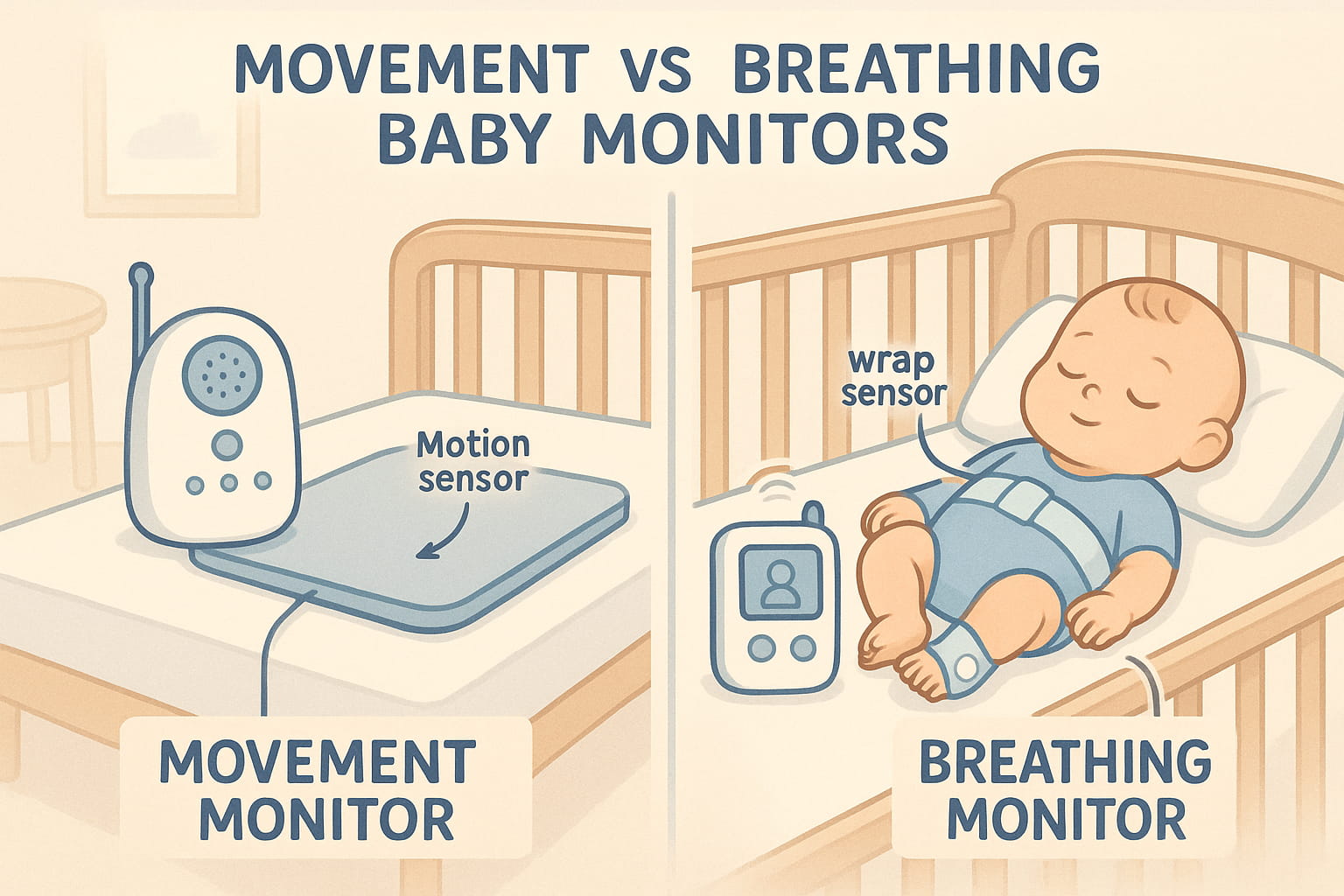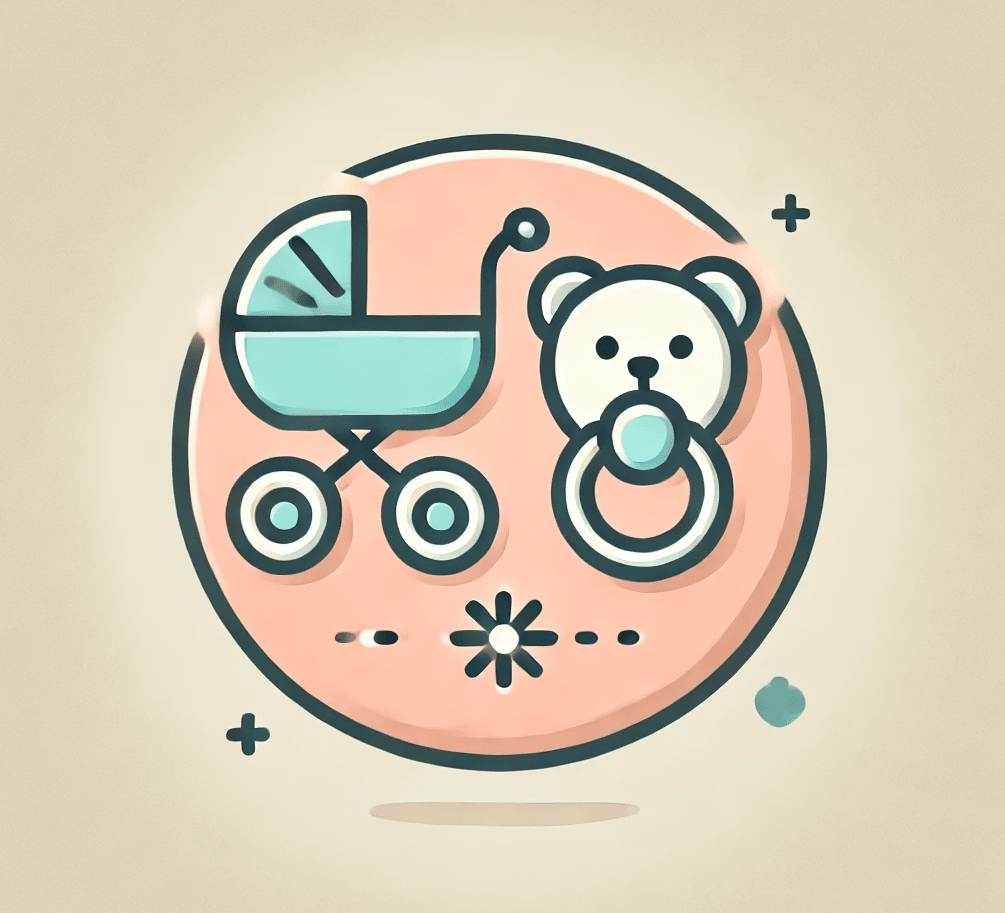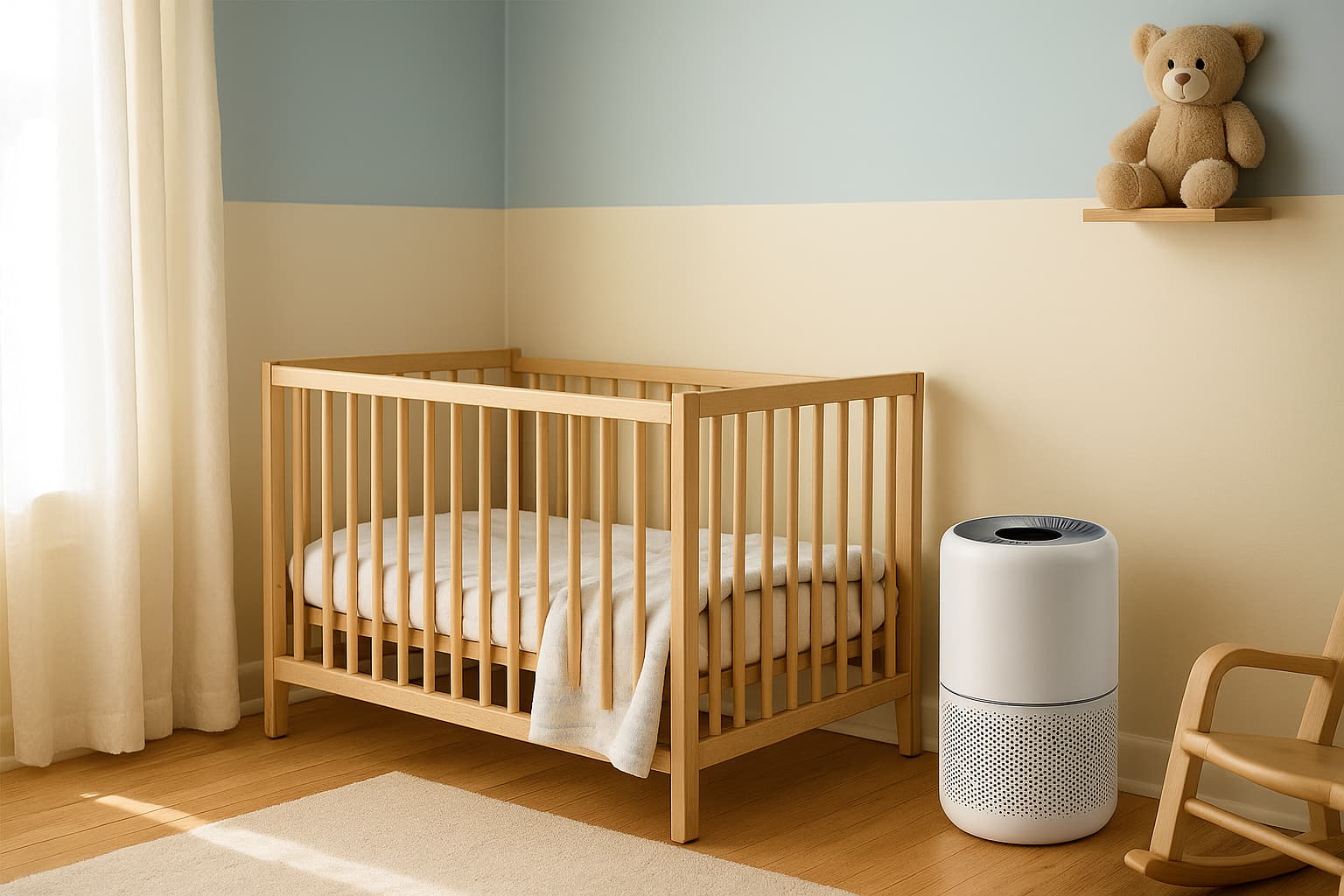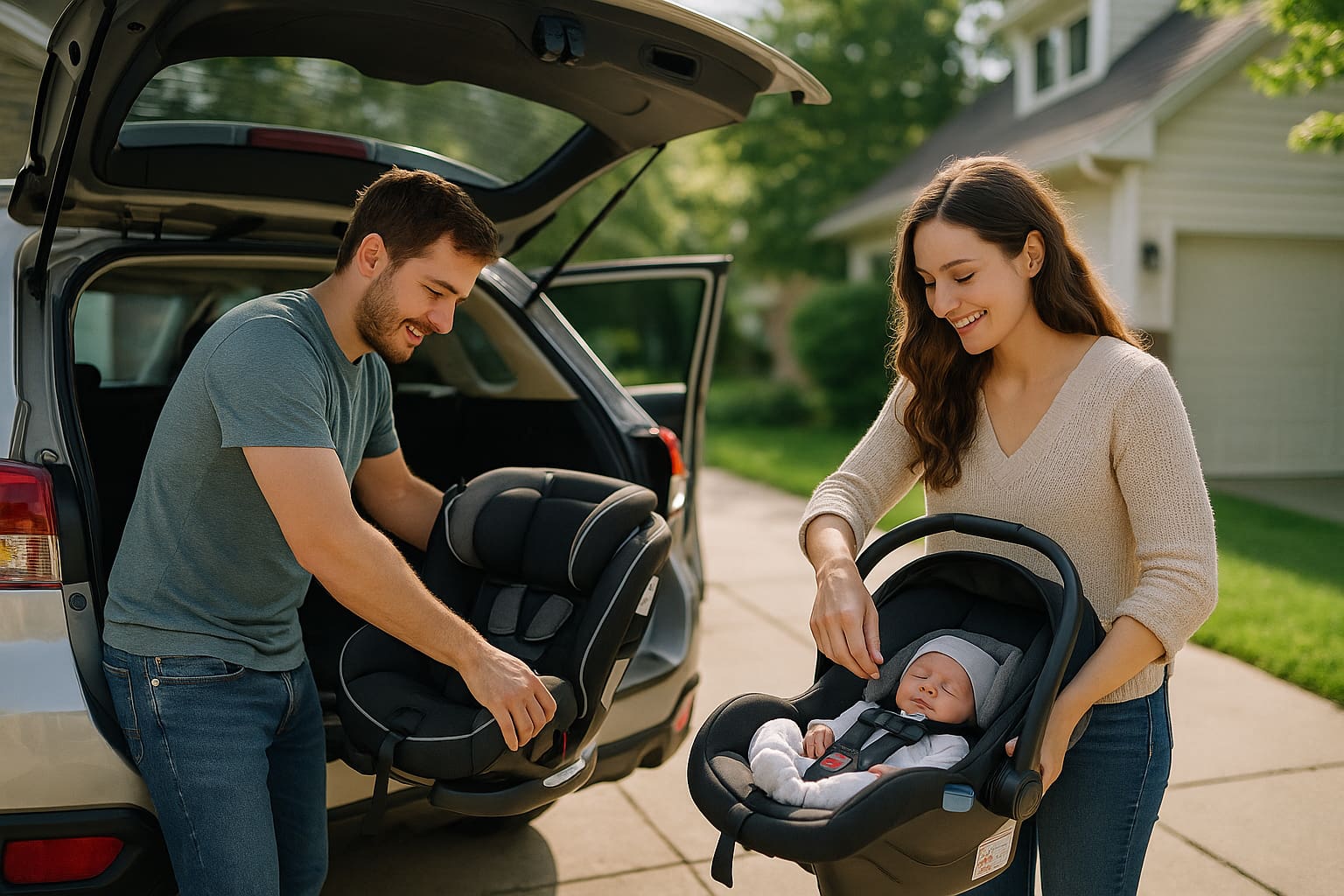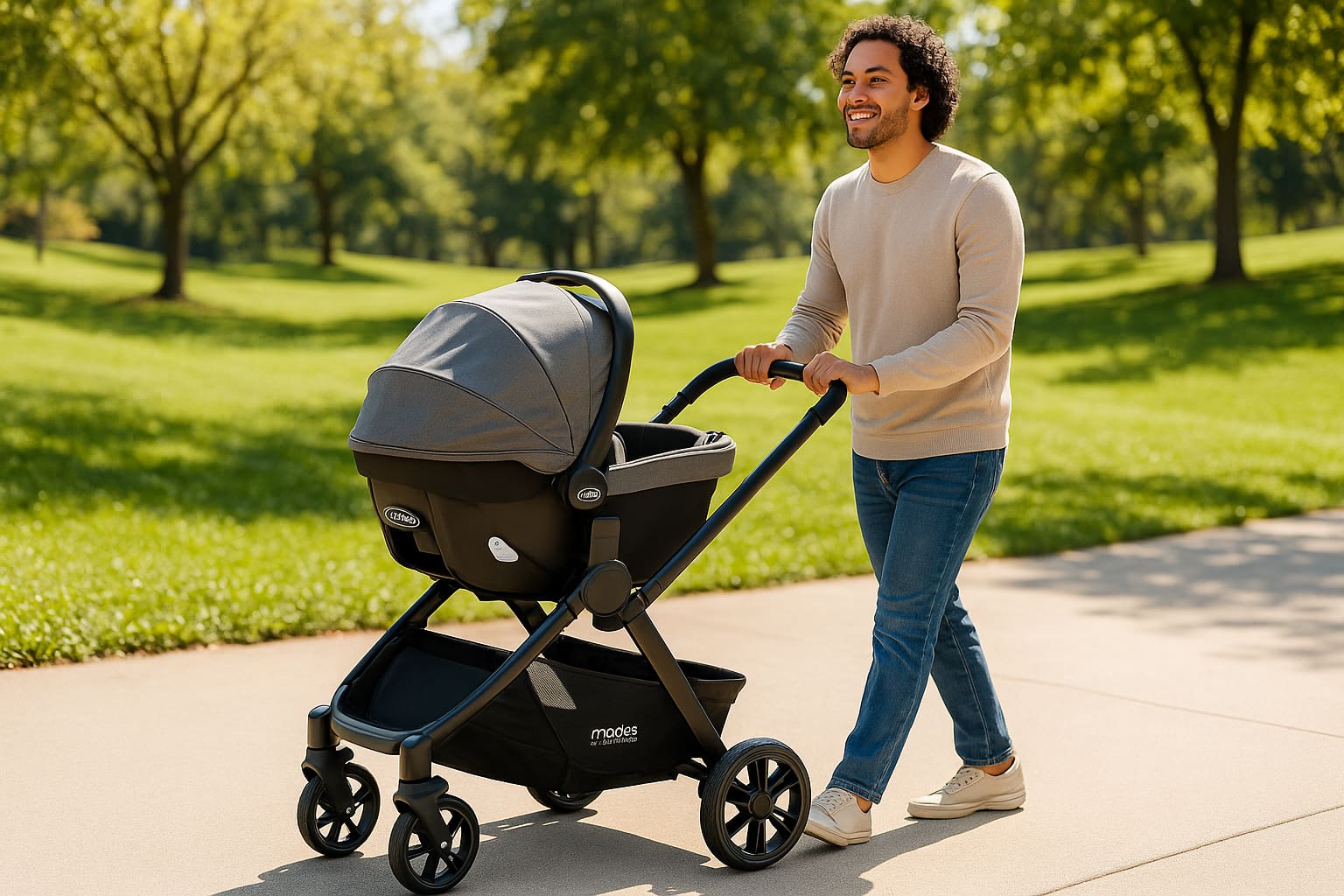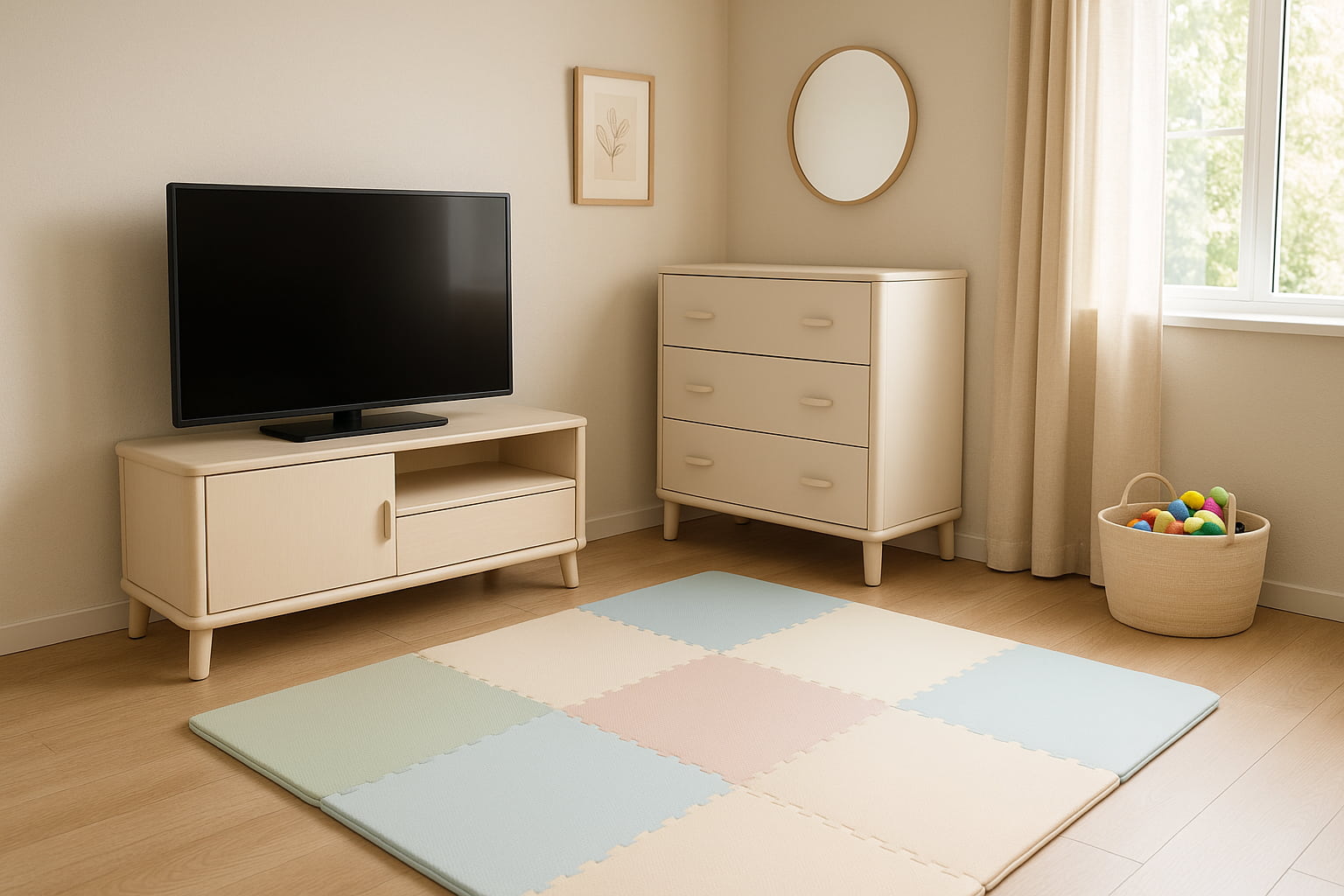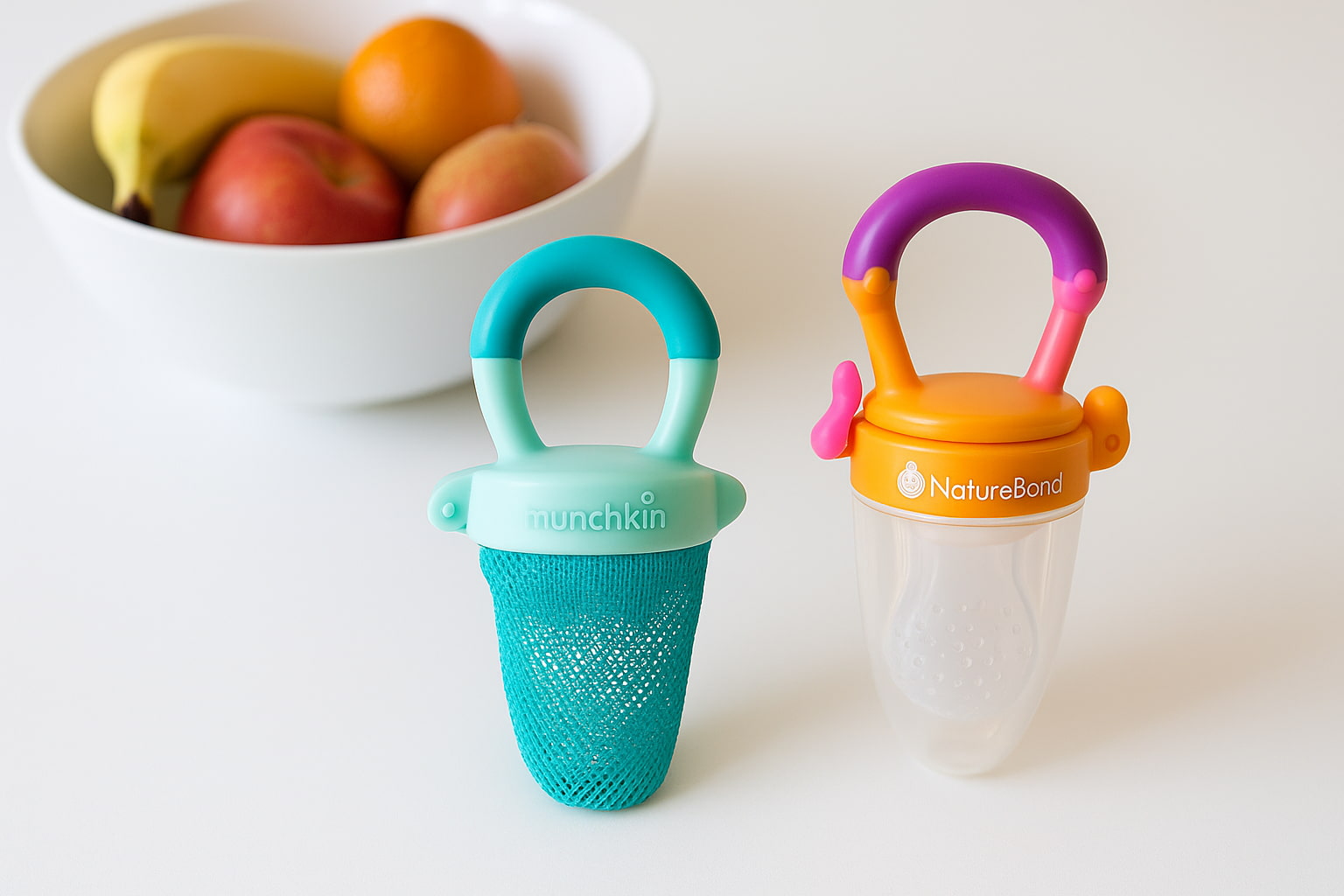Movement vs breathing baby monitor: Which one should you trust with your baby’s safety? It’s a question many new parents face. And it’s simple to feel overpowered by the variety of options available.
While your baby sleeps, both kinds of monitors keep an eye out for life. But they work very differently, and what they offer parents isn’t always the same.
Some use sensors under the mattress. Others watch breathing patterns with wearables or cameras. Peace of mind is the aim, but how you get there will depend on your needs.
In this guide, we’ll break down the key differences, show when each is most useful, and help you make a safer, smarter choice.
Let’s figure out what fits your family best.
🧭 What Is a Movement Baby Monitor?
The purpose of a movement baby monitor is to detect body movement, usually by placing a sensor pad beneath the mattress. These sensors track small shifts and overall motion, alerting you if movement stops for a certain amount of time.
Often, movement monitors are used to keep an eye on:
✅ Chest movement during sleep
✅ Rolling over or adjusting
✅ Lack of motion beyond a certain threshold (usually 15–20 seconds)
These types of monitors don’t provide visual breathing data but instead trigger alerts based on a lack of detectable movement. They’re typically simpler in design and focus more on motion detection than biometric analysis.
🌬 What Is a Breathing Baby Monitor?
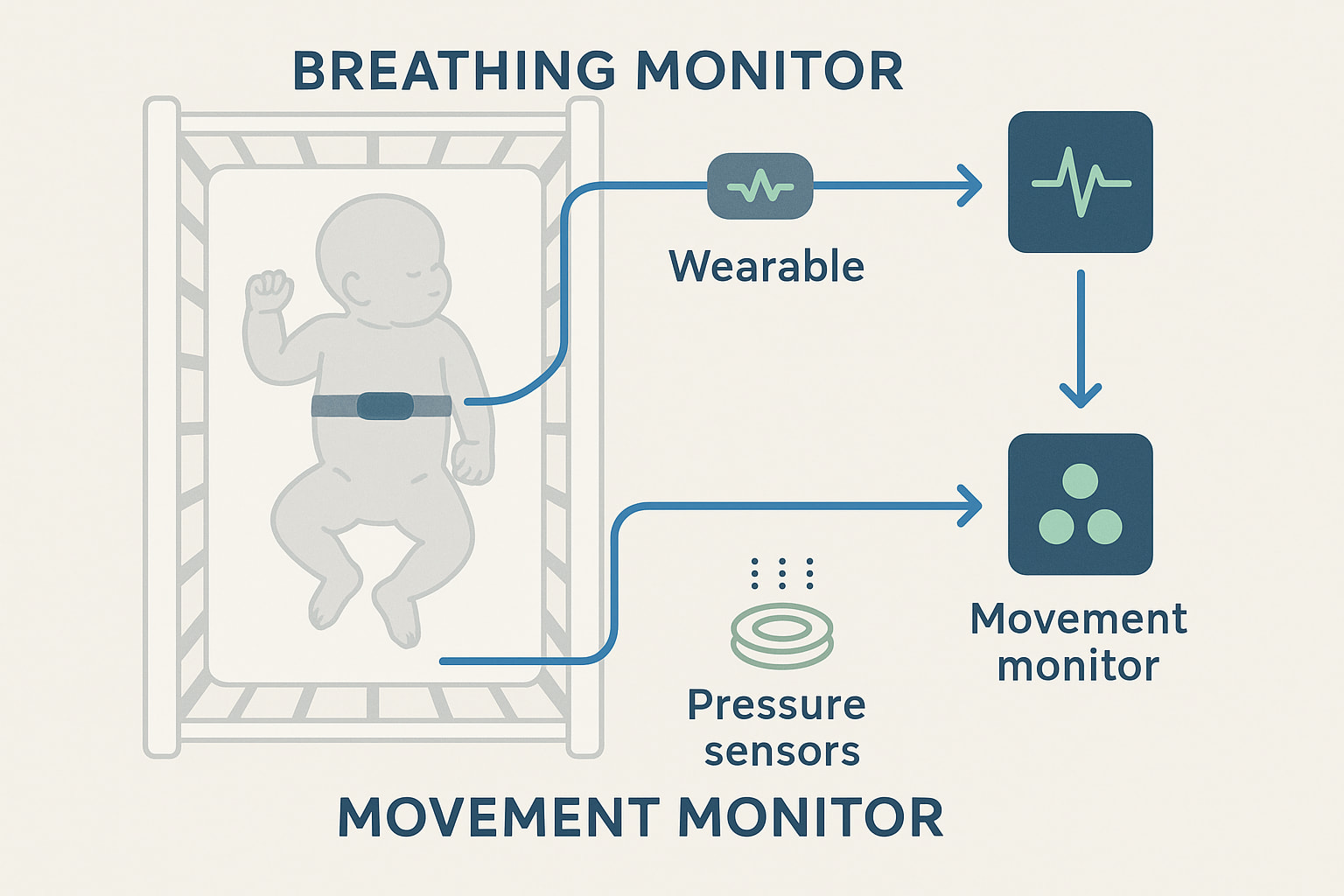
A breathing baby monitor goes a step further by tracking actual respiration patterns. Instead of only tracking motion, a breathing monitor watches your baby’s actual breathing rate. It uses wearables, radar-based sensors, or even camera software to do this.
Breathing monitors may include:
✅ Smart socks (like Owlet)
✅ Camera-based AI (like Nanit or Miku Pro)
✅ Chest sensors or contact-free radar
These monitors are often favored by parents who want deeper insights or have babies with medical needs.
👉 Curious about which breathing monitors parents actually trust? Explore our list of 4 Trusted Baby Monitors with Breathing Monitor Picks Parents Rely On for Safety.
🧠 How Do They Detect Movement or Breathing?
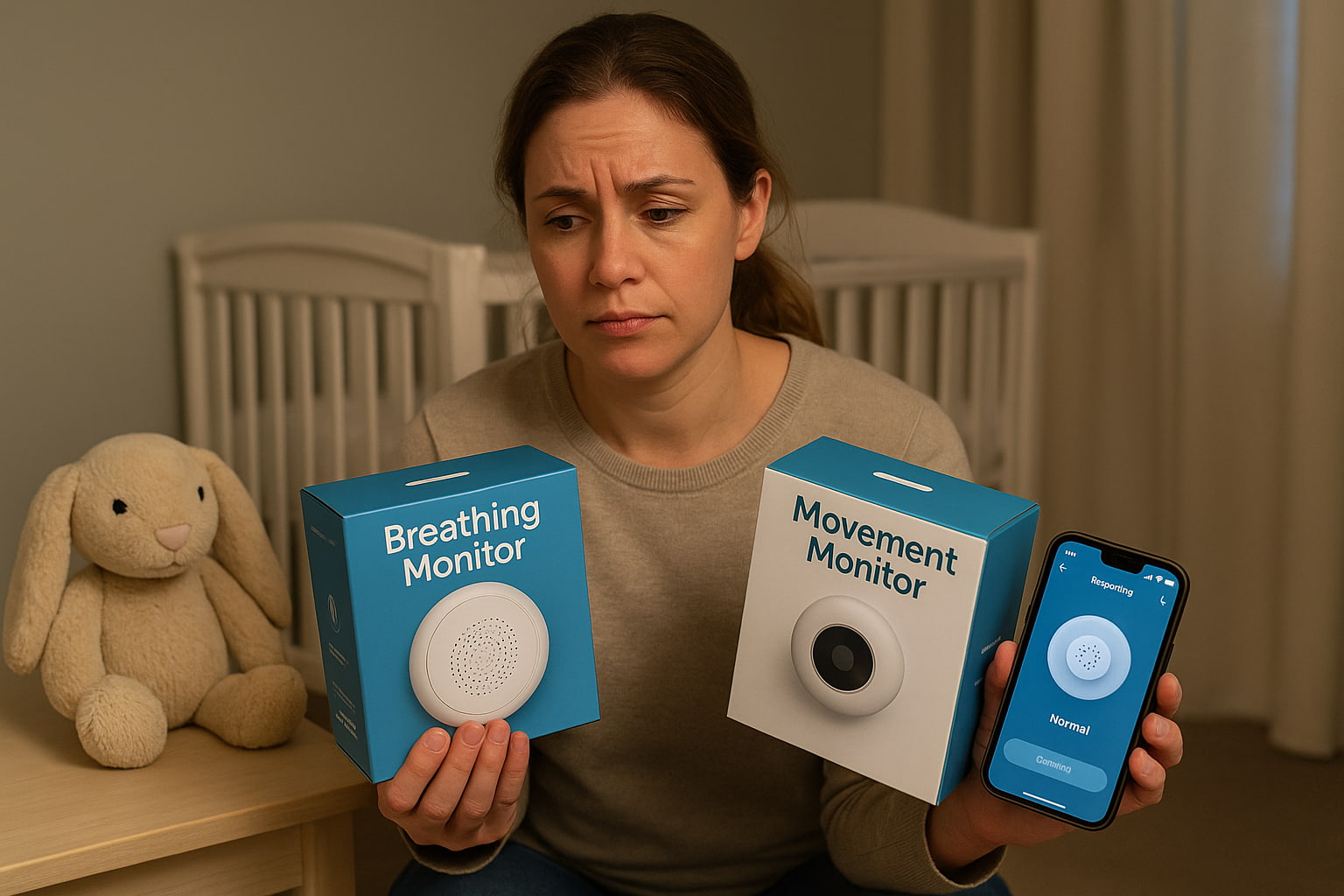
The difference in detection technology is one of the most important distinctions.
Movement Monitors Use:
🔹 Pressure-sensitive pads
🔹 Accelerometers (in some clip-on wearables)
🔹 Vibration detection for gross motor shifts
Breathing Monitors Use:
🔹 Camera AI to observe chest rise and fall
🔹 Radar pulses to sense micro-movements
🔹 Sensors for heart rate and oxygen (for wearable models)
Breathing monitors give you deeper insights into your baby’s health, like breathing patterns. Movement monitors, on the other hand, only track general body movements.
🔔 Types of Alerts and How They Work
Both monitor types offer alerts, but they’re triggered differently.
Movement Monitors:
🔹 The alarm sounds when no movement is detected within a preset time (often 15–20 seconds)
🔹 Alerts typically come from a parent unit or base station
Breathing Monitors:
🔹 Alarms are triggered by irregular or paused breathing
🔹 May also include app alerts for increased breathing rate or trends over time
Some breathing monitors let you adjust how sensitive the alerts are. Most movement monitors have fixed settings to prevent constant false alarms.
❤️ Health and Safety Considerations
For many parents, safety is the biggest reason to choose a baby monitor.
👉 Breathing monitors can feel more secure. They keep an eye on your baby’s chest movement or oxygen levels. This helps if your baby was born early or has any health issues.
👉 Movement monitors work under the mattress. They check for motion. But if your baby rolls away from the sensor, the alarm might go off even if everything is okay.
False alarms can cause stress. However, both varieties provide comfort in different ways.
🚨 Important: These are not medical devices unless the box says FDA-approved. Always double-check the product details before you buy. Safety starts with knowing what your monitor can and can’t do.
🧠 Fact Box – Do You Know?
The American Academy of Pediatrics clearly states that home breathing monitors should not be used to prevent SIDS, though they may offer reassurance for families with high-risk infants, such as preemies or those who experienced ALTE/BRUE.
👉 Wondering if EMF exposure is a concern with these devices? We explore that in EMF Radiation and Baby Monitors: Separating Myth from Fact.
💸 Cost Comparison: Which One’s Budget-Friendly?
Another key factor to consider when deciding between the two is cost.
Movement Monitors (Budget-Friendly Choice):
🔹 Generally more affordable than breathing monitors
🔹 Offer basic movement detection without smart features
🔹 Fewer components means lower long-term cost
Breathing Monitors (Premium Option):
🔹 Typically priced higher due to advanced features
🔹 Include smart apps, sleep analytics, and breathing motion tracking
🔹 Some require subscriptions for full functionality
If you’re on a tighter budget, movement monitors are more accessible. But breathing monitors offer more insights, especially if you’re willing to invest in smart features.
⚠️ Reliability and False Alarm Rates
No monitor is perfect, but some are more prone to triggering unnecessary alerts.
🔸 If the sensor pad moves or the baby moves away from the pad, movement monitors can give more false alarms.
🔸 Breathing monitors can misread patterns if Wi-Fi drops or the sensor loses contact.
To improve reliability:
🔸 Follow the setup instructions carefully
🔸 Keep firmware and apps updated
👉 Not sure if you need smart features or prefer local-only monitors? Smart Monitors vs Traditional Monitors might help you decide.
👶 When to Choose a Movement Monitor
A movement monitor may be ideal if:
✔️ You want a simple, affordable way to track motion
✔️ Your baby is healthy and full-term
✔️ You’re okay without app integration or deep analytics
Movement monitors are also great if you prefer low-tech or non-WiFi options for privacy reasons.
🫁 When to Choose a Breathing Monitor
A breathing monitor makes more sense if:
✔️ Your baby has medical concerns or was born prematurely
✔️ You want to track your breathing and sleep simultaneously
✔️ You like remote app access and sophisticated features.
While more expensive, these monitors are trusted by many tech-forward parents.
👉 Want help comparing top-rated movement models? Our breakdown of the Best Baby Movement Monitors Compared: Which Model Gives You Peace of Mind? walks you through it.
🏁 Final Verdict: Movement vs Breathing Baby Monitor
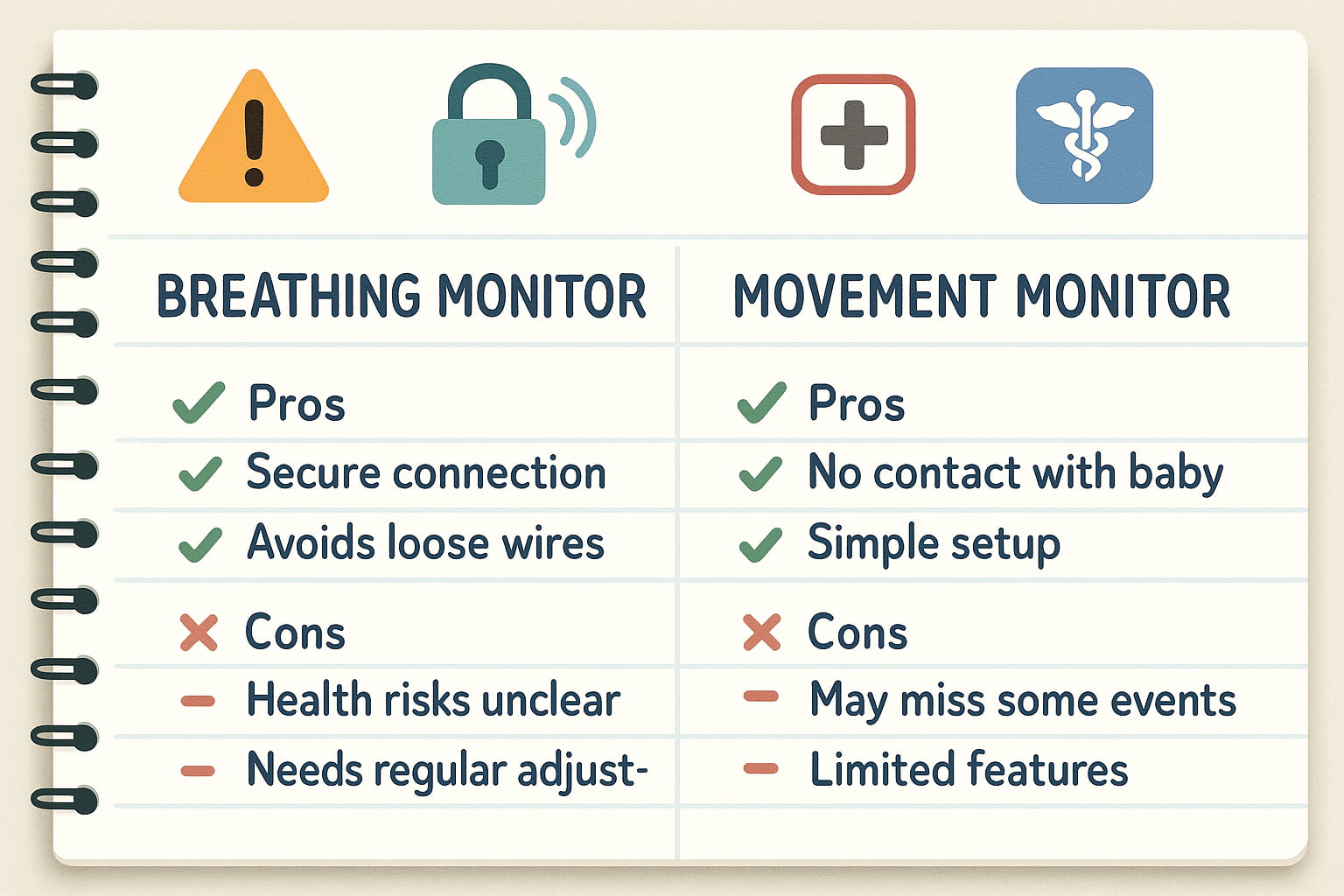
Choosing between a movement vs breathing baby monitor depends on what matters most to you.
Movement monitors are simple and budget-friendly. They alert you if your baby stops moving for a set amount of time. That provides enough peace of mind for a number of parents.
Breathing monitors take things further. They use advanced tools to monitor your baby’s chest motion or breathing rate. This can feel more reassuring, especially if your baby was born early or you’ve had past health scares.
But here’s the honest truth: neither option is perfect. False alarms can happen. And no monitor replaces safe sleep habits or regular check-ins.
So what should you do?
Pick the monitor that fits your parenting style. If you’re tech-comfortable and want full data, go for breathing. If you want simplicity and ease, movement monitors work great too.
Either way, you’re doing what counts, looking out for your baby.
❓ FAQ Section
Q1: Are breathing monitors safer than movement monitors?
Not necessarily. Both types provide different types of data, but neither replaces safe sleep practices.
Q2: Can these monitors prevent SIDS?
No. According to AAP, no home monitor can prevent SIDS. They are tools for awareness, not prevention.
Q3: Are there combo monitors with both movement and breathing features?
Yes, some models (like Miku Pro) use radar for both motion and breathing.
Q4: Do breathing monitors require monthly fees?
Some, such as Miku and Nanit, provide improved analytics through subscriptions. Basic functions often remain free.
Q5: Which is better for privacy, movement, or breathing monitors?
Movement monitors are often local-only, while breathing monitors may use cloud storage. Always check data policies.
Disclaimer: This article is for informational purposes only and should not be used as a substitute for professional medical or safety advice.
Written by Find For Baby
Helping parents make safer, smarter choices every day.
